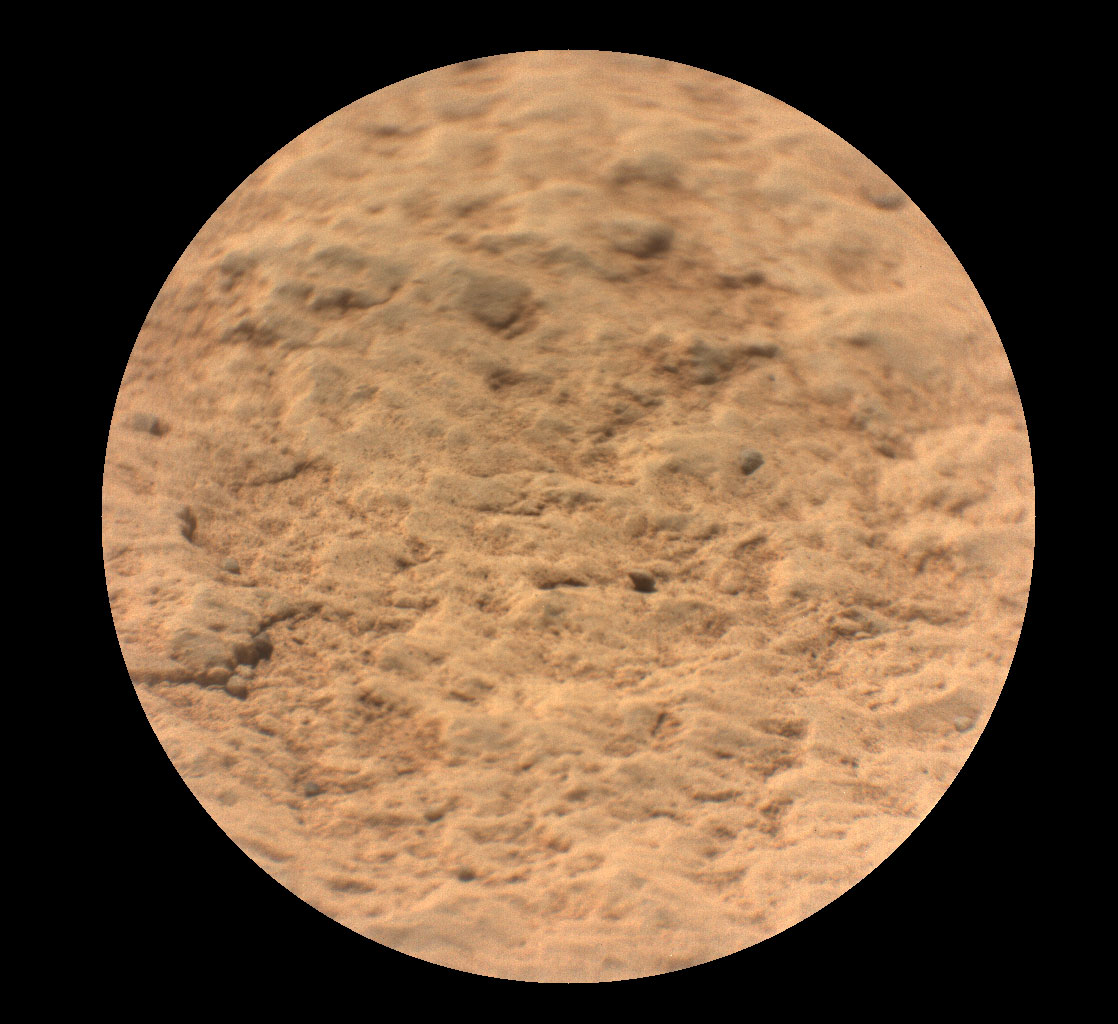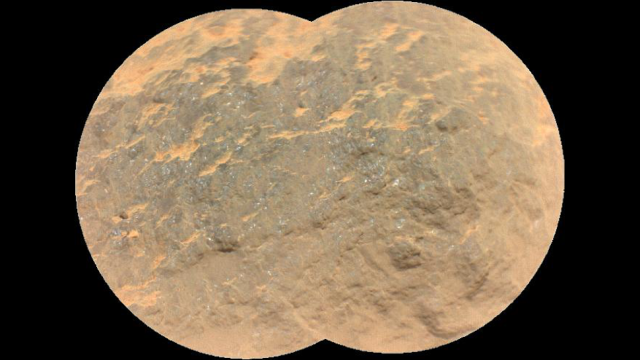Unprecedented audio recordings taken by NASA’s Perseverance rover are transporting us to the surface of the Red Planet, allowing us to hear the sound of a gentle alien breeze, and the click-clicking of lasers zapping a Martian rock.
We’re exactly three weeks into the Perseverance mission, so it’s still early days. The project is in the deployment phase, with the Mars 2020 team systematically deploying each of the rover’s many instruments to make sure they’re working properly and configured for the science phase of the mission. Perseverance will spend the next two years or more exploring Jezero crater, so there’s no need to rush things along.
The team recently rolled out the rover’s aptly named SuperCam, in an early showcase of the instrument’s tremendous potential. Affixed to the rover’s mast, the 5.4-kilogram SuperCam can perform five different types of geological analysis, allowing the team to select the best rocks for sampling.

These explorations are important from a geological perspective, but also from an astrobiological perspective. Rocks in Jezero crater — a former lake — could contain fossils or other biomarkers indicative of former microbial life. Whereas the key goal of the ongoing Curiosity mission was to determine if Mars was once habitable (it apparently was), the Perseverance rover is actually looking for evidence of ancient aliens (to be clear, habitability is different than inhabited; Mars may have once fostered the conditions for life, but that doesn’t mean life actually took root on the Red Planet).
The SuperCam instrument was developed by the Los Alamos National Laboratory in New Mexico and a consortium of French labs headed by the Centre National d’Etudes Spatiales. The first data packet from SuperCam was recently received at the French Space Agency’s control centre in Toulouse, according to a NASA statement. Newly released SuperCam images show a pair of rocks, dubbed Yeehgo and Máaz, in exquisite detail.
“It is amazing to see SuperCam working so well on Mars,” Roger Wiens, the principal investigator for SuperCam, said in the statement. “When we first dreamed up this instrument eight years ago, we worried that we were being way too ambitious. Now it is up there working like a charm.”
Perseverance is also unique in that it’s capable of recording sounds on Mars. NASA has provided three different audio samples, and they include the first acoustic recording of laser shots on Mars, and the sound of Martian winds.
Perseverance recorded the laser sounds at a distance of 3.1 metres from the target rock. The clicking sounds produced by the laser pulses vary, allowing scientists to infer various physical characteristics of the target, such as hardness.
“SuperCam truly gives our rover eyes to see promising rock samples and ears to hear what it sounds like when the lasers strike them,” explained Thomas Zurbuchen, associate administrator for science at NASA headquarters in Washington, DC, in the statement. “This information will be essential when determining which samples to cache and ultimately return to Earth through our groundbreaking Mars Sample Return Campaign, which will be one of the most ambitious feats ever undertaken by humanity.”
The future mission Zurbuchen is referring to will be quite historic, as the samples cached by Perseverance would represent the first Martian materials returned to Earth for analysis.
The Mars 2020 team has also rolled out and received data from the rover’s visible and infrared sensor, one of the SuperCam sensors. This instrument gathers reflected sunlight, exposing the mineral content of rocks and sediments.
SuperCam’s Raman spectrometer is also producing data, an achievement that now represents the first time that spectroscopy has been done somewhere other than Earth, Olivier Beyssac, CNRS research director at the Institute of Mineralogy, Materials Physics and Cosmochemistry in Paris, pointed out in the NASA statement. Raman spectroscopy works by shooting light — specifically green laser beams — at a target object, like a rock. This non-destructive technique shows how light is interacting with chemical bonds in the target, providing information about the object’s chemical structure, internal levels of stress, and other information.
[referenced id=”1677892″ url=”https://gizmodo.com.au/2021/03/mars-rover-landing-site-named-after-sci-fi-legend-octavia-butler/” thumb=”https://gizmodo.com.au/wp-content/uploads/2021/03/09/rteavlxpg3pmkknhockx-300×169.jpg” title=”Mars Rover Landing Site Named After Sci-Fi Legend Octavia Butler” excerpt=”That magical spot in Jezero crater where NASA’s Perseverance rover made its historic landing last month has been named “Octavia E. Butler Landing” in honour of the late sci-fi author.”]
“Raman spectroscopy is going to play a crucial role in characterising minerals to gain deeper insight into the geological conditions under which they formed and to detect potential organic and mineral molecules that might have been formed by living organisms,” said Beyssac.
Looking ahead, the Mars 2020 team will continue to test the rover’s driving capabilities (it’s already clocked 6.49 metres), and choose an aerial field from which to deploy the Ingenuity helicopter.
